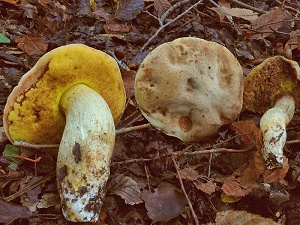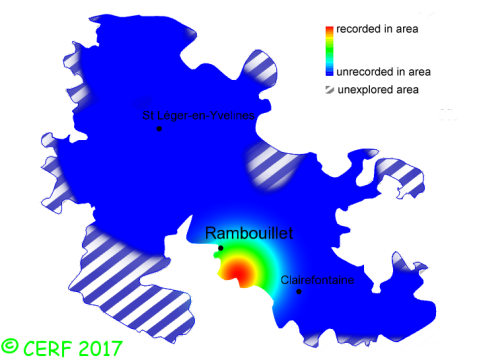| Boletus depilatus Redeuilh. |
|
|
|
|
|
|
The cap is beige-brown to ochre-reddish, fleshy, convex and irregularly bumpy as if hammered. The cap surface is matt, downy and dry, felty then smooth, staining red in a few hours on manipulated parts. The cap margin is sharp, slightly overhanging. The stem is cylindrical, sinuate, tapering towards the base, deeply rooting. It is bright yellow at the apex. The flesh is pale yellow to white (lemon yellow above tubes); its taste is mild; the odour is distinctive, of iodine at stem base, faint elsewhere; The tubes are lemon yellow to olive yellow, not bruising blue. The pores are narrow, lemon yellow (same as tubes), not turning blue when pressed. The spore print is olive brown. It grows in broad-leaved forests, on a rather calcareous and dry soil, mostly with hornbeam, also with elm. The fruiting period takes place from July to November.
Distinctive features : beige-brown to ochre-reddish cap, bumpy; crooked stem deeply buried in the soil; stem without network; no colour change of pores when pressed; iodine odour at stem base Boletus depilatus is rare and confined in the forest of Rambouillet, and is quite rare, more generally speaking . | ||
|
page updated on 14/01/18

